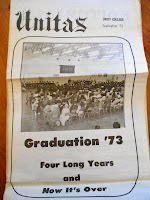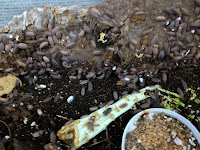 On November 4, 2013, energy policy expert Sharon Reishus spent an afternoon and evening on campus, visiting a class combined of Professional Writing and Natural Resource Policy students, and then meeting students and faculty for dinner at Unity House.
On November 4, 2013, energy policy expert Sharon Reishus spent an afternoon and evening on campus, visiting a class combined of Professional Writing and Natural Resource Policy students, and then meeting students and faculty for dinner at Unity House. 
Oversight agencies like the PUC were established to regulate utility companies in the absence of the sort of free market competition that is assumed to result in fair market prices. A natural teacher, Sharon explained that monopolies for utility companies were established by federal and state governments to avoid duplication of major infrastructure efforts, as Sharon reminded us during her classroom presentation. For example, having three electric or telephone companies would require three sets of lines.
The PUC is a judicial body that holds hearings on matters like rate increase requests, and requests for proposals for offshore wind projects. In the course of her service to the commission, Sharon saw an evolution in the type of stakeholders who came before the PUC. Increasingly diverse groups of citizens and corporate interests -- including representatives from the renewable energy industry -- all promoted their particular interests.
Sharon, who cares deeply about environmental issues in Maine and in the world, told us it became quite agonizing to weigh the often competing interests of economic prosperity, including jobs for Mainers, with ecosystem health and the consequences of fossil fuel emissions. I appreciated Sharon's emphasis on the complexity of energy issues. Like most complex systems, energy production and consumption systems benefit from diversity. A diverse energy portfolio can increase our overall energy security.
One of Sharon' proudest accomplishments was helping to bring the PUC and the Department of Environmental Protection together in founding the Regional Greenhouse Gas Initiative (RGGI), the first market-based regulatory program in the United States to reduce greenhouse gas emissions. She believes that California's new carbon credit trading program will have a significant international impact on greenhouse gas emissions.
After class, the discussion continued at Unity House, where faculty including Dr. Janis Balda, students from
the class, and members of Unity's Honors Program shared a very tasty dinner. Thank you to Dining Services chefs Charlie Krause and Jay Lozada for their thoughtful and creative selections, featuring locally-sourced food.

































